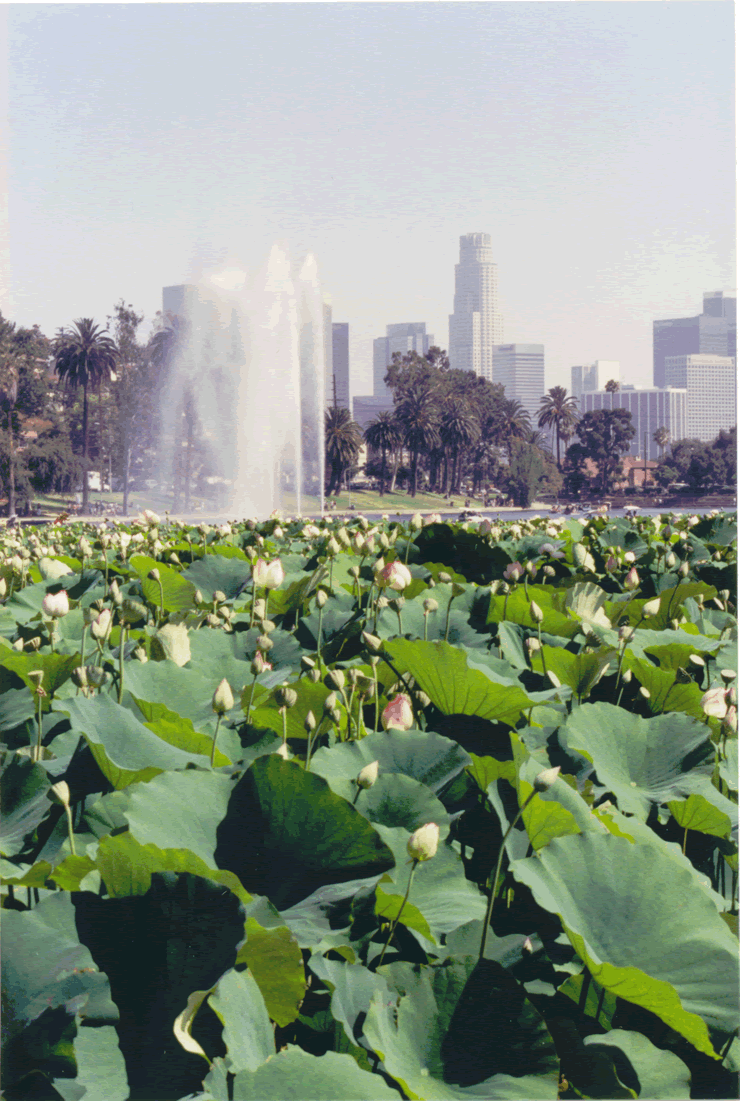
The Urban Rough Layer (URL) - is the layer which main distinguished feature is the actual existence of a two-phase medium in which turbulent transport meteoelements and pollutants occurs. The porous or roughness layer (RL) is the layer between the subsurface and a similar surface running close to the roughness peaks, which is approximately parallel to the subsurface. The structural properties of the roughness layer (obstacle layer) are classified as regular, uniformly rough, non-uniformly rough, randomly rough and highly porous.
Of ever-growing importance are transport processes resulting from interactions of the atmospheric boundary layer with ground roughness elements. It is natural that problems of atmospheric diffusion and heat pollution in large urban settlements be formulated with an allowance for the interaction of the atmospheric turbulent boundary layer (ABL) with an underlying surface consisting of urban roughness layer (URL) obstacles. In order to determine and choose a model for turbulent transfer in a URL medium and over it in an ABL, it is necessary to distinguish specific types of models. Depending upon time and space scale descriptions and the quantization of a modeling object, which concern the fields of meteorological elements and pollutants, pollution sources together with the morphologically determined region of their spreading, deterministic or stochastic models may be appropriate. In a city, the main features of an analysis are the nonhomogeneity of the distribution of pollution sources in space and the problem of description or parameterization of the underlying surface roughness.
If the rough surface is described by the function z=>(x,y) and the root-mean-square deviation of this function, F>, is far greater than the characteristic viscous scale of the boundary layer, *u=</u*0, where < is the coefficient of kinematic viscosity and u*0=(J/D)˝ is the dynamic velocity, then the rough or porous subsurface layer properties are determined by different probability function >(x,y) moments, by the viscous scale, *u, and other morphological characteristics of this layer.
An understanding of the ways the two- and three phase URL phenomena of transport have to be modeled with the VAT scaled approach, which originally was developed for vastly different scale and physical phenomena, was the opening point in development of turbulent transport scaled modeling in porous media and URL. As such the development and application of heterogeneous nonlinear and turbulent phenomena scaled description (VAT) began with these advancements in air pollution modeling in 1982-86.

Everyone would see the hazy air around and down the high-rise buildings over this beautiful city in a sunshiny day. And that is just close to an ocean - less then a kilometer.
A part of an urban environment and such a critical one for the air quality are the phytoelements as trees and a grass covering
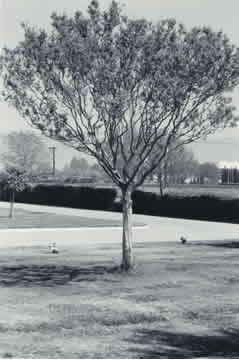
In many occasions phytoelements are almost inseparable from the buildings
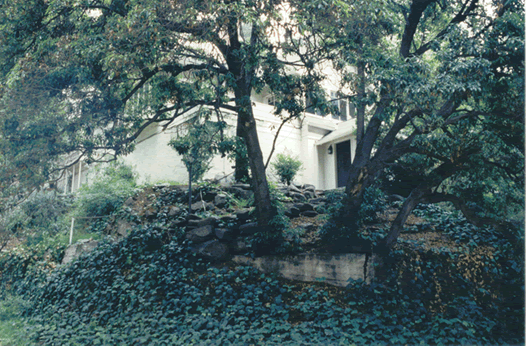
nevertheless, both should be the different parts of urban meteorological models.
The mountain range separating the San Fernando valley of the big Los Angeles from the ocean causes sometimes the inverse and still ABL conditions worsening the quality of the air in the Urban Rough Layer
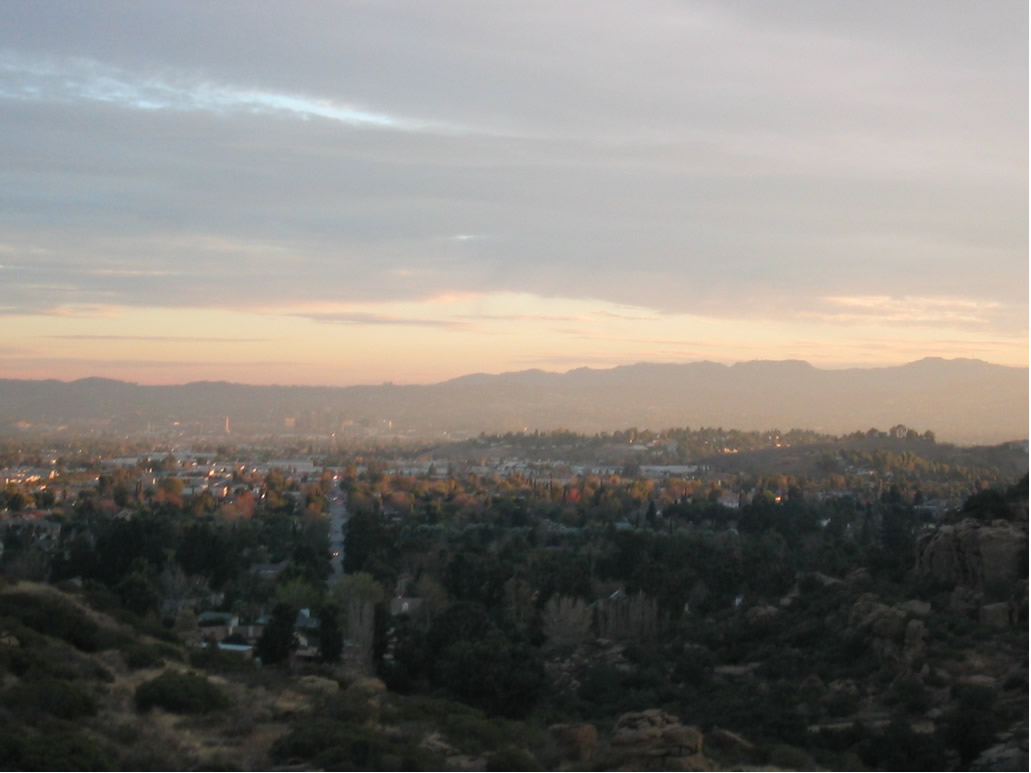
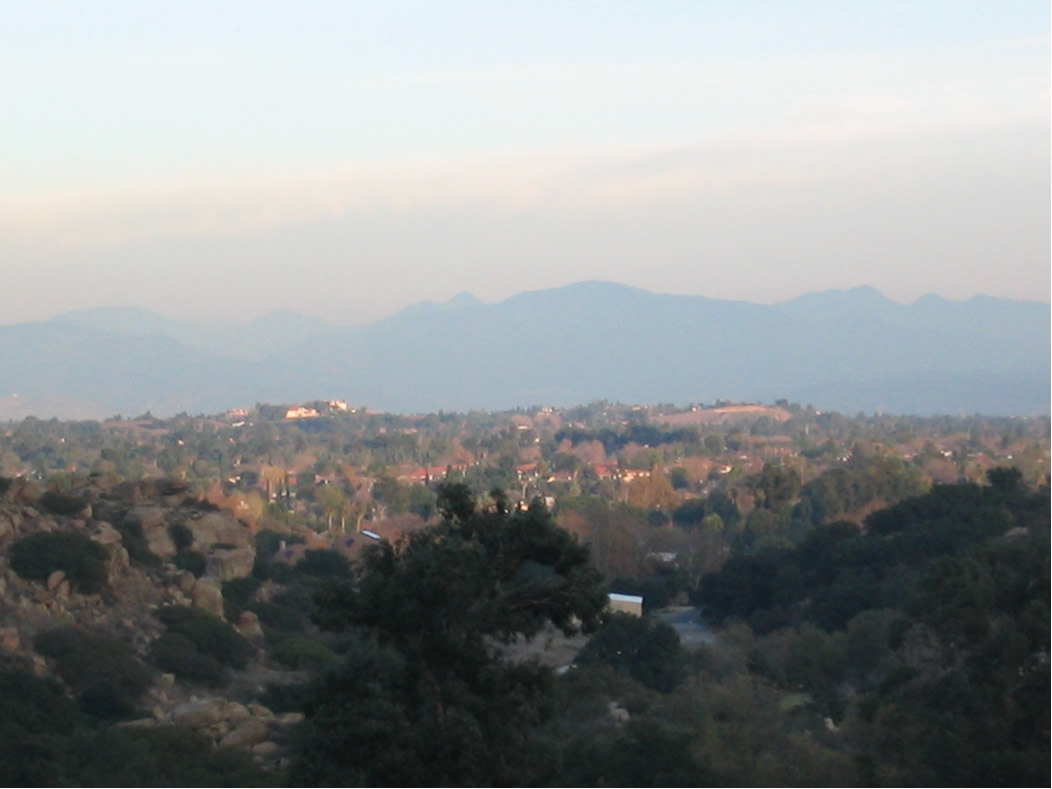
Studies of a turbulent boundary layer with a rough or porous subsurface are
conducted on a common theoretical basis called the boundary layer theory.
Experimental and theoretical works cover a wide range of roughness types and
cover the scope of processes taking place. Surveys devoted to this problem
have been published by Durgin and Chock (1982), Kader and Yaglom (1984), and
Kalikov et al. (1986). Most of existing theoretical models for turbulent
transport over rough surfaces of different scales are based on the use of
generalizing parameters such as the roughness value
z0 ,
the displaced layer thickness d and the coefficient of aerodynamic drag of the obstacles (Kader and Yaglom
1984; Yaglom and Kader 1974; Taylor et al. 1985; Dubov et al. 1978). The
obstacle layer resistance force is simulated in such models by a power law
relationship based upon the mean speed of fluid motion in the obstacle layer,
as shown in the work of Kader and Yaglom (1984), Dubov et al. (1978), and in
an assortment of other researchers studies. In most cases the difference in
accounting of consequences of neglecting "morpho" fluctuations due to
morphology characteristics of medium is not recognizable. The morphological
notions being used are the specific surface of the obstacles,
![]() , the void space,
, the void space,![]() , or the surface
, or the surface
![]() porosities, height, hr, rib's pitch,
pr, and rib width, wr.
porosities, height, hr, rib's pitch,
pr, and rib width, wr.
Because of unspecific mathematics and general ambiguities in other theoretical scaling approaches, one can notice that the same models and equations are often employed to simulate turbulent (and other) processes in a media with very different morphological properties, making the model insensitive toward the most important - to the morphological specifics of media in which a process is occurred.
The ratio of hr to n/u*0 - the roughness Reynolds number or dimensionless roughness height determines as
With the roughness height as the length scale, the law of the wall is written, for example, (Nikuradse 1932)
Nikuradse (1932) measured A=2.5 and R=8.5 as constants for sandgrain roughness developed flow. Schlichting (1936) conducted experiments with artificial roughnesses of different size, spacing and shape (spheres, spherical segments, cones and ribs) and evaluated R as a function of h+ for every roughness geometry.
These data are widely being used in various technical areas and in problems for verifications and validation of models and experiments.
Meanwhile, the results of these experiments have to be used carefully, as Schlichting assumed that the smooth side walls of the experimental channel did not affect the measurements in the center of the channel.
Coleman et al. (1984) revised and re-evaluated classic data yielded by Schlichting's experiments dealing with flow around grain roughness on the subsurface. They show that Schlichting's heat transfer data, based on equivalent roughness values, exceeds the corrected values by 25 to 550 percent. The majority of Schlichting's experiments have covered only the transitional area of turbulent resistance. Schlichting's hypothesis that a rough surface of any type can be described by an equivalent height of roughness, ks, can lead to grave inaccuracy (Taylor et al. 1985).
Numerous articles have dealt with two-dimensional regular types of roughness on the subsurface or the walls in channels. The most commonly considered regular types of roughness have the attractiveness that they can be treated not only with numerical or experimental methods , but also yield to the application of analytical approaches. For analytical methods, one of the most important things to close and evaluate is proper modelling of the pressure drop and the pressure-strain correlation in the transport equation. There are many difficulties in developing an adequate pressure-strain model (Speziale et al. 1991). Nonuniform roughness differs from uniform roughness in that differences in the metric properties of obstacles and the "porous" space have an insignificant number of harmonics. The spectrum of differences in the metric characteristics of a randomly rough and highly porous layer on the subsurface is continuous or countable. At small values of the obstacle Reynolds number (and of the relative area of the obstacles on the surface, ps=(1-ms)) with ms being the surface porosity), the flow in the turbulent boundary layer can be treated as a flow above the subsurface with some properties of roughness (Kader and Yaglom 1984, Taylor et al. 1985).
In general, the obstacles are randomly nonhomogeneous elements both as to their volume, height, dimensions, shape and their arrangement and orientation on the subsurface. One of features of interest is that the greater the flow resistance in channels or over and around obstacles, the greater is the heat and mass exchange, and this is well known fact. For developed roughnesses with Reynolds numbers of Re* = hr u*0/n > (104 – 106 ), the surface structural metric (medium being flowed around) and dynamic properties (flowing fluid in boundary layer or in channels) lead to the study of flows in a "super-rough" medium with numerous obstacles as well as in a highly porous media. The assortment of roughness Reynolds numbers of interest in the problem of urban turbulent transport spans through the very large range.
The whole Atmospheric Boundary Layer within the urban structures developed regions can be artificially devided into four sublayers (see, for example, Rotach, 1993) -
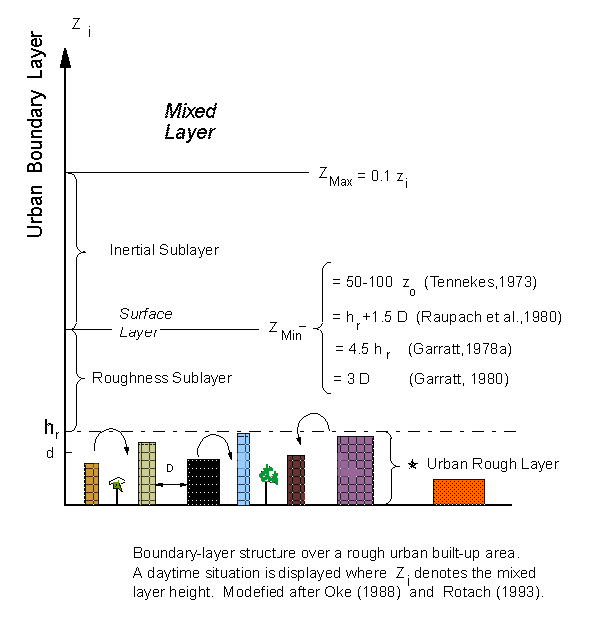
from which the lowest sublayer is considered more closely and named often as an "urban canopy layer." This lowest sublayer can be physically distingueshed from the above layers as being actually consisting of the two-phase medium.
These two-phase medium layer transport definitions - containing buildings, architecture elements and phytocenosis elements, were introduced and specified in my works with co-authors - see in Shcherban et al. (1986a,b), Primak et al. (1986,1989), (other studies) as the Urban Rough Layer (URL) medium transport for which was aimed and suggested that this medium to be used in the two-scale two-or three phase models of turbulent transport and air pollution in urban environments.
Independent treatment of turbulent momentum, mass- and energy transport in the fluid (air) phase and transport in the "solid" (actually just smaller scale inner porous medium of buildings) phase, connected through the specific surface (the solid-fluid interphase in the REV) allows the more accurate modeling for the Upper Scale as well as for the two-scale mode of the turbulent transport mechanisms within the streets void space in the URL and between the solid phase (build-up volumes, phytocenosis') of the urban rough layer and the atmospheric air phase. Urban rough layer was dealt with as a heterogeneous porous medium.
The methodology was based on the theory of averaging the turbulent transport equations in the porous medium developed in 80-th (Shcherban et al., 1983a,b; 1986a,b; Primak et al., 1982,1986; Primak and Travkin,1989).
We should introduce here the method, the geometrical model for a Representative Elementary Volume to be determined in the URL. It is the cylinder or the parallelogram with it's horizontal dimensions of the REV far greater than the characteristic dimensions of the roughness elements in longitudinal direction -
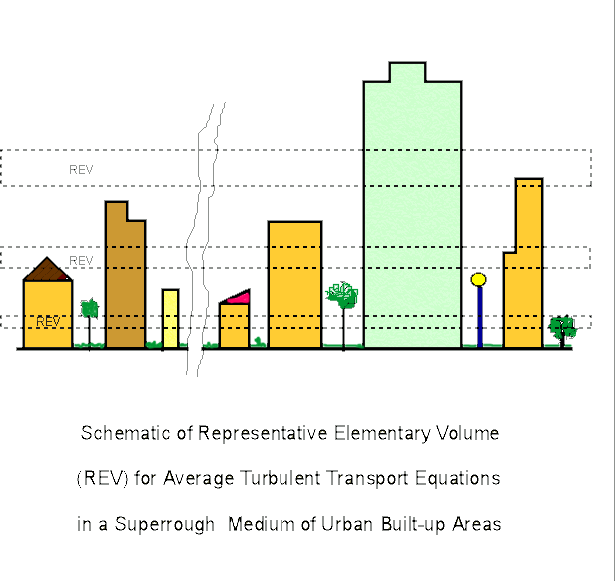
In the case of regularly arranged roughness elements the longitudinal dimension of one REV is typically taken as a one pitch of the roughness elements, as it was done for the technical problems -
In few subsections below the air pollution and meteoelements turbulent transport within the URL considered as the two scale problem in a specific porous sublayer of ABL in an urban environment.
Shcherban, A.N., Primak, A.V., Travkin, V.S., "Simulation of Mass- and Heat Transfer Under Atmospheric Air Pollution in Towns and Industrial Centers", Prom. Teplotekhnika, Vol.5, No.4, pp.96-104, (1983a), (in Russian).
Primak, A.V., Travkin, V.S., and Shcherban, A.N., ""Analysis of Descriptive Statistics of the Air-Pollutant Concentration and Meteorological Parameter Fields in Heavily Industrialized Cities", Fluid Mechanics-Soviet Research, Vol.11, No.5, pp.89-100, (1982).
Shcherban, A.N., Primak, A.V., Travkin, V.S., "Comparative Statistical Characteristics of Air Pollution Levels and Meteofactors in Two Cities With Developed Industry", Problemy Kontrolya i Zaschita Atmosfery ot Zagryazneniya, No.9, pp.3-12, (1983b), (in Russian).
Shcherban, A.N., Primak, A.V., and Travkin, V.S., "Mathematical models of flow and mass transfer in urban roughness layer," Problemy Kontrolya i Zaschita Atmosfery ot Zagryazneniya," No.12. pp.3-10, (1986a), (in Russian).
Shcherban, A.N., Primak, A.V., and Travkin, V.S., "Turbulent Transfer in Urban Agglomerations on the Basis of Experimental Statistical Models of Roughness Layer Morphological Properties", Trans. World Meteorol. Org. Conf. Air Pollution Mod. & Applic., WMO, Geneva, V.2, pp.259-266, (1986b).
Primak, A.V., Shcherban, A.N., and Travkin, V.S., "Interaction of Differential-Stochastic and Structure-Stochastic Models of Turbulent Transfer of Meteoelements and Pollutants Diffusion, Morphology of Urban Roughness Layer and their Application in Forecasting", in Proc. All U.S.S.R. Conf. on Transformation and Distant Transfer of Gaseous and Aerosol Admixtures in Atmosphere and on Creating of Air Pollution Models, pp.33-34, October 1986, Vilnius, Lithuania, (1986), (in Russian).
Primak, A.V. and Travkin, V., "Simulation of Turbulent Transfer of Meteoelements and Pollutants Under Conditions of Artificial Anthropogenic Action in Urban Roughness Layer as in Sorbing and Biporous Two-Phase Medium", in Trans. Intern. Symposium on Interconnection Problems Hydrological Cycle and Atmospheric Processes Under Conditions of Anthropogenic Influences, HPR, April 11-13 1989, Schopron, pp. 1-6, (1989).